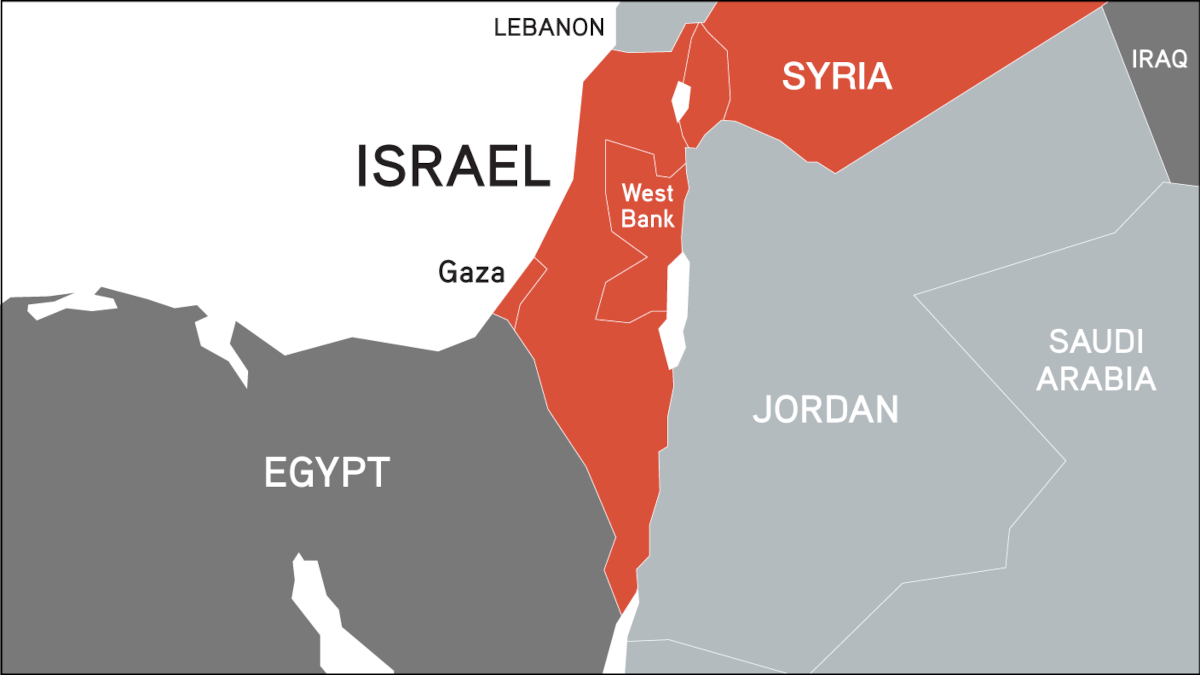The Israel-Palestine conflict, deeply rooted in historical, political, and territorial disputes, continues to be a focal point of Middle Eastern geopolitics. A series of events, including cross-border attacks, political maneuvers, and shifting military objectives, have shaped the recent dynamics between Israel and the Palestinian territories, particularly Gaza.
At the heart of recent tensions, Hamas’s unprecedented attack on Israel in early October revealed a new level of organizational capability, catching Israeli defenses off-guard. This assault, which resulted in significant casualties, emphasized the persistent volatility of the region.
Historically, the enmity traces back to claims over the territory spanning the Jordan River to the Mediterranean Sea, with both Israelis and Palestinians considering it their homeland. Over the decades, sporadic violence, displacements, and armed confrontations have persisted, often fueled by deeper ideological and territorial disagreements.
- Historical Context:
- The origins of the Israel-Palestine conflict are multifaceted. Some trace its roots to ancient Roman times, while others cite the late 19th-century Jewish migration to the Ottoman Empire, driven by the desire to escape European persecutions and the rise of Zionism.
- The Balfour declaration by the British in 1917 supported a “national home for the Jewish people” in Palestine. This set off tensions with Arab communities in the region.
- UN’s Role in 1947:
- The United Nations voted to partition Palestine into two states, one Jewish and one Arab. This decision came on the heels of the devastation wrought by the Holocaust.
- However, the creation of the state of Israel wasn’t accepted by the Palestinians or the neighboring Arab countries. Intense fighting ensued.
- Impact on Palestinians:
- With the armistice agreement of 1949, Israel gained more territory than initially outlined by the UN.
- Consequently, around 700,000 Palestinians were displaced, marking an event they refer to as the Nakba, or “catastrophe.” The issue of their return remains unresolved.
- Emergence of the PLO:
- In 1964, the Palestine Liberation Organisation (PLO) was established, spearheaded by Yasser Arafat. Its initial objective was the establishment of an Arab state in place of Israel.
- 1967 and the Territories:
- In the six-day war of 1967, Israel took control of significant territories, including Gaza Strip, West Bank, and East Jerusalem. The consequences of this conflict still reverberate today, especially concerning Jewish settlements in the West Bank.
- The Rise of Hamas:
- While the PLO was largely secular, Hamas emerged in the late 1980s as an Islamist faction. Its formation was influenced by figures like Sheikh Ahmed Yassin, and it quickly gained traction among Palestinians.
- Intifadas:
- In 1987, Palestinians initiated the first intifada, an uprising marked by mass protests and confrontations with the Israeli forces. It led to the start of the Oslo peace process.
- The second intifada, which started in 2000, was far more violent, with numerous suicide bombings and significant casualties on both sides.
- The Peace Process:
- The Oslo accords initiated in the 1990s marked a significant step towards peace, but they were fraught with disagreements. The assassination of Israeli Prime Minister Yitzhak Rabin in 1995 further complicated the situation.
- Hamas in Gaza:
- After winning the 2006 elections, Hamas took control of Gaza, leading to sanctions and blockades by Israel. Attacks from both sides have escalated tensions over the years.
- Current State:
- The possibility of a two-state solution has stagnated in recent times, especially under Israeli Prime Minister Benjamin Netanyahu. The annexation of the West Bank remains a contentious issue.
The conflict has seen countless shifts and turns over the years. However, the hope for peace and a two-state solution remains a consistent aspiration for many in the international community.
How Hamas’s Attack on Israel Devolved into Chaos
On October 7th, the world was caught off-guard when Hamas militants executed an audacious cross-border assault into Israel. Using bulldozers, they dismantled the border fence at several points, outsmarting and outmaneuvering Israel’s defense mechanisms. But what began as a calculated military operation quickly devolved into a chaotic spree that terrorized civilian areas.
The Fallout:
Hamas’s militants captured individuals across a territory spanning more than 20 miles, with a significant number being non-combatants. Tragically, a dance festival near the border became a site of horror as over 260 bodies were found there. As of now, the death toll in Israel has reached at least 1,400, with 4,562 injured. Among the casualties were 31 U.S. citizens, and 13 remain unaccounted for.
Historical Tensions Rise to the Forefront:
The roots of this present conflict extend far beyond recent times, with origins tracing back to the formation of the state of Israel and the establishment of Hamas. Both Palestinians and Israelis have staked their claim to the region between the Jordan River and the Mediterranean Sea, leading to periodic surges of violence and conflict.
Over the past decade and a half, U.N. data reveals that 6,407 Palestinians and 308 Israelis have lost their lives due to these tensions.
Hamas and Israel:
A Cycle of Conflict: Since its inception in 1987, Hamas has been a thorn in Israel’s side. The group, which the United States has designated as a terrorist organization since 1997, won Gaza’s elections in 2006. By 2007, it had ousted the Palestinian Authority and took complete control of Gaza.
Hamas’s refusal to recognize Israel’s right to exist and its use of violent tactics, backed by Iran, have consistently exacerbated tensions. The group has employed rockets, suicide bombings, and kidnappings targeting Israel. In retaliation, Israel, with its formidable military capabilities, has enforced a stringent blockade on Gaza, which many international rights groups have condemned as collective punishment and a breach of international law.
Recent Events Sparking the Conflict:
Several incidents in the past year have further stoked the flames of conflict. In May 2021, an Israeli eviction drive in a Palestinian neighborhood to make way for Jewish Israelis in East Jerusalem led to intense confrontations. This prompted Hamas to retaliate with rocket attacks on Israeli cities.
The tension escalated further when, in April, Israeli forces entered the al-Aqsa Mosque, a revered Muslim site. By May, a clash between Israel and Islamic Jihad, another Palestinian militant group, resulted in the deaths of 22 individuals in Gaza and two in Israel.
Tensions seemed to have eased during the summer, but by the end of August, Israel, attributing a series of attacks on its settlers in the West Bank to Hamas, revoked new work permits and barred permit-holding workers from entry.
The events of October 7th have once again thrust the Israel-Hamas conflict into the global spotlight, with the world anxiously waiting to see the next turn in this long-standing saga.
In the evolving political and military landscape of the Middle East, Israel has charted a decisive course regarding its stance on Hamas in the Gaza Strip. With recent statements from prominent Israeli figures, it becomes apparent that Israel’s military objectives in Gaza are shifting from their past modus operandi. Israeli Prime Minister Benjamin Netanyahu, in a significant political maneuver, formed a unity government with a once-political adversary. Emerging with a strengthened political position, he has unequivocally proclaimed his intent to terminate Hamas’s reign in Gaza. A clear sign of this resolve is the stated military goal of targeting the leadership of the militant group.
Echoing the Prime Minister’s sentiment, Tzachi Hanegbi, Israel’s National Security Council chief, articulated Israel’s growing impatience with Hamas’s governance in Gaza. He asserted that Israel can no longer recognize Hamas as a “sovereign entity in the Gaza Strip.” Hanegbi’s remarks are particularly notable for their vehemence. He committed to achieving “complete victory,” emphasizing the objective to not merely incapacitate Hamas’s military and governmental capacities but to also thwart any chances of its resurgence.
It’s essential to understand these recent objectives within the context of Israel’s historical military campaigns in Gaza. The ground invasions into Gaza in 2014 and 2019 were driven by different goals. In these operations, Israel sought to chastise and weaken Hamas without necessarily eradicating it. This restraint, however, came at a high human cost. The 2019 offensive saw over 1,000 Palestinian casualties, while the 2014 incursion resulted in the deaths of over 1,500 individuals, including more than 500 children.




